The Weight I've Carried For More Than A Decade
It's *not* what you think...it's an exciting professional update.
About 10 years ago, I began to experiment with “runmuting” from Brooklyn to Manhattan a couple of times a week. As in: part of my work commute included running across the Brooklyn Bridge to lower Manhattan after dropping my kids off at elementary school in the Carroll Gardens neighborhood of Brooklyn. Depending on where my offices were at the time—over the years, I’ve worked at SELF, Well+Good, SoulCycle, Cosmo, WH—or how aggressive I was feeling, the route could be three, five or even eight miles long.
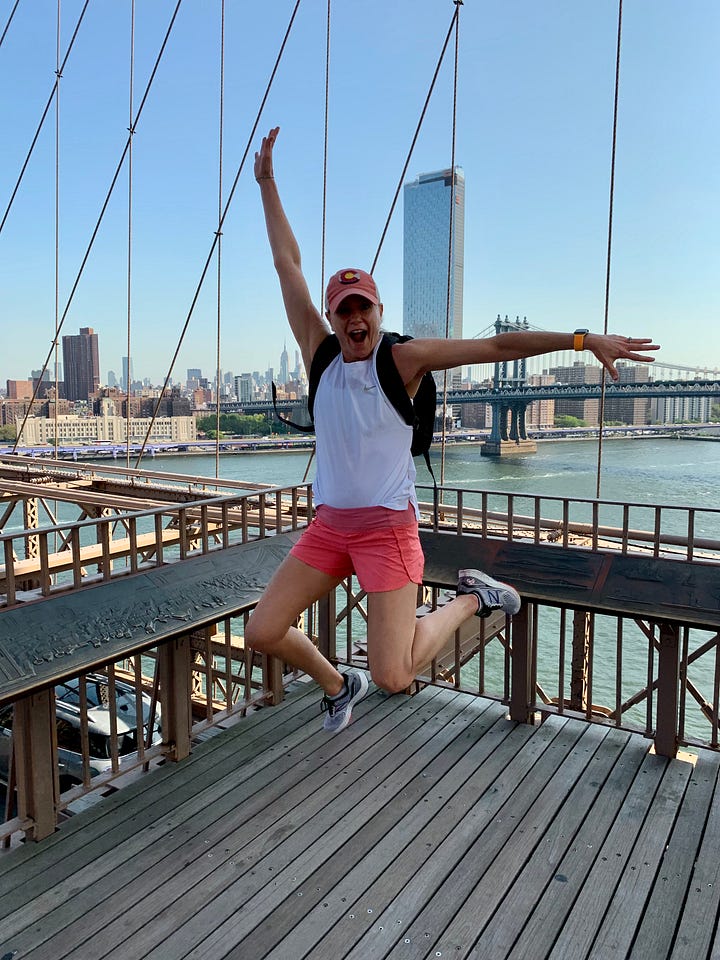
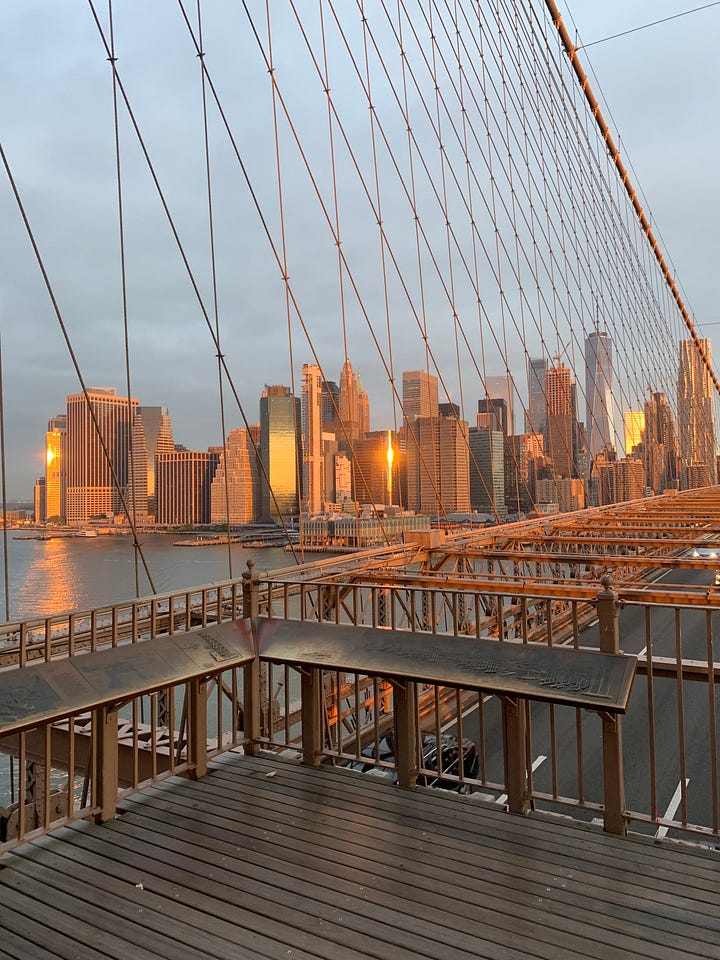
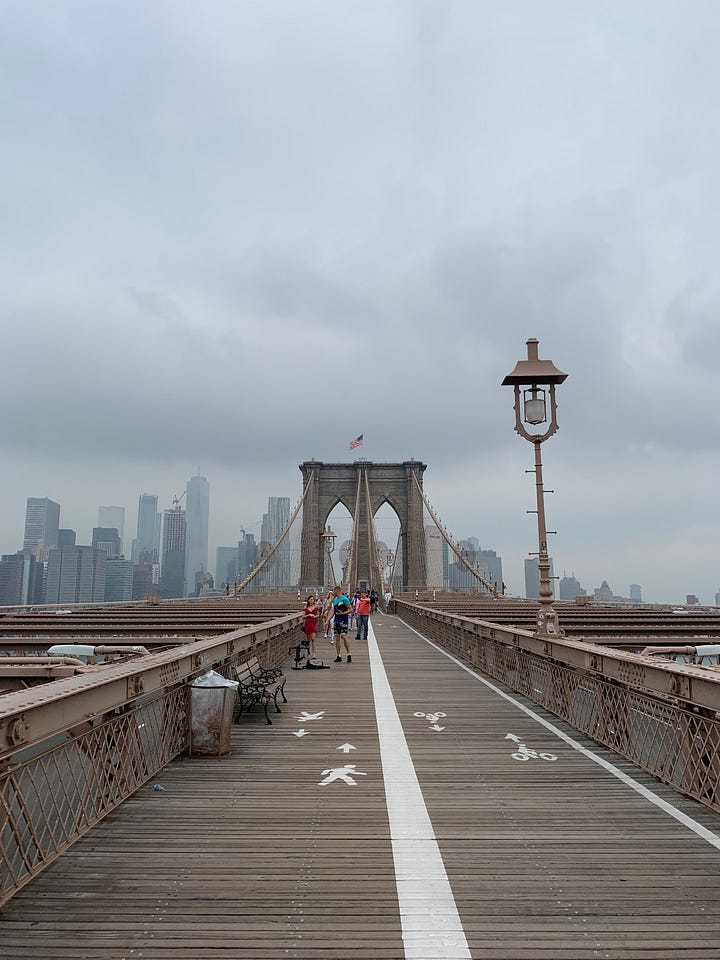
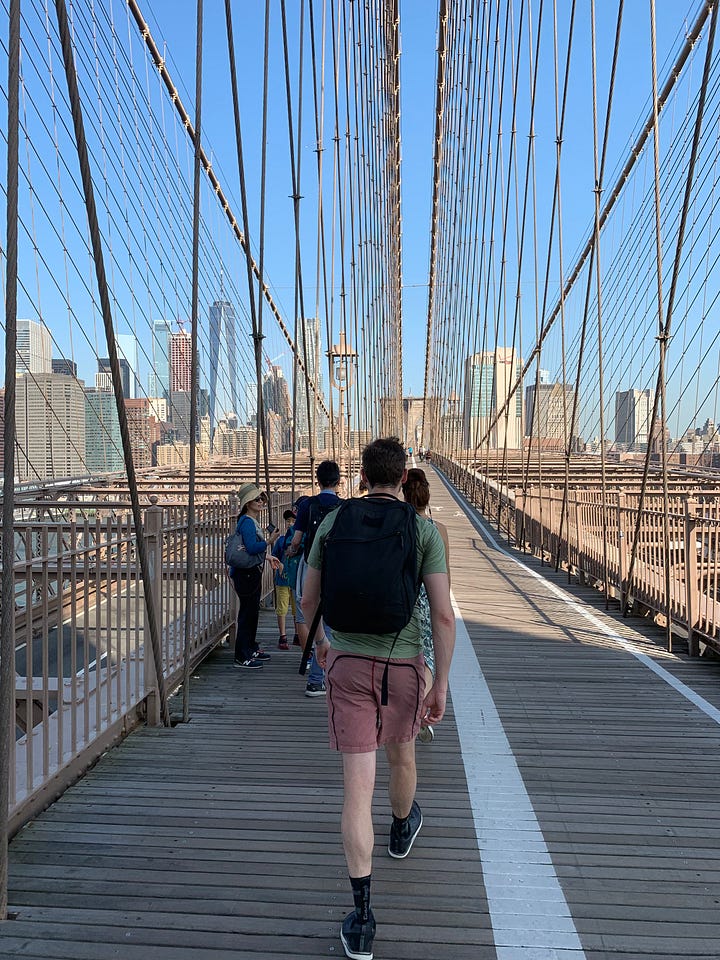
It’s difficult to put into words the overwhelming feelings of delight and awe that I experienced while watching the sun glint off of NYC’s skyscrapers as I approached the energetic heart of one of the most iconic cities on earth. Like many NYC residents, I don’t go to museums, the ballet or Broadway shows nearly as much as I should…but I definitely do take advantage of Manhattan’s morning magic.
For a trek like that—which is called rucking, by the way, whether you are running, jogging or walking—you need an amazing backpack to hold all of your gear: laptop, notebook, skincare stuff, makeup, work outfit, even shoes. You want zippers in the right places, a safe storage spot for your laptop, tough as nails material to withstand the elements, and a big enough main compartment to hold everything. Most importantly, the pack must nestle snuggly against your back so it doesn’t jostle and swing.
Finding the exact right one is not easy, I gotta tell you.
I give full credit to my husband Matt for gifting me the perfect rucksack, made by GORUCK. He noticed that backpacks I road-tested (from other brands that shall not be named) were not up to the task. Too swingy. Too cutesy. Too small. Etc.
Every investment that he makes, big or small, comes with a ton of research. And after going down many rabbit holes, he determined that the GORUCK Echo (it’s an OG rucksack…the GR0 is similar, and more weighted vests will be launched in the coming weeks and months) was meant for me. Matt got himself a different, bigger version. He also runmutes and travels a good amount for work.
Built to last, lifetime guarantee, 1% of revenue supports those who serve. Understatedly cool. Overwhelmingly awesome. I haven’t purchased another backpack since.

MY GORUCK has followed me through many seasons (rain, snow, crisp fall days, spring breezes, and summer heat), new jobs, family and work trips, parenting, all of the things.
I’ve sprinted for the subway with it on my back, logged miles on Citibikes to avoid traffic, taxis and tourists, and yes, it also regularly showed up in my #HearstElevatorSelfies over the seven years that I was EIC of Women’s Health. (Now you know: I’m the antithesis of Meryl Streep in The Devil Wears Prada.)
That weight I’ve been carrying on my back all of these years? Turns out that it was the catalyst for an exciting development in my professional life. I’m thrilled to share that I’m adding another role to my work portfolio in my post-WH chapter: I’ve just been named Creative Director at GORUCK, and I’ll be collaborating with the brand on story-telling, product development and events—like our upcoming women’s retreat in Costa Rica—as they lean even harder into the women’s space in the coming months. Dreamy stuff, right? I agree!
(In case you wondered, I’ll continue to work as an advisor with brands that I’m passionate about and that light me up. And I will still be here on Substack, writing about all things fitness, nutrition and health.)

I’ll let two of the very smart, very kind, very cool female executives at GORUCK who I now am working closely with share more about rucking, the brand’s history and their personal connection to movement…
Liz: You built a brand rooted in grit, community, and movement. What was your original vision for GORUCK—and how has it evolved?
Emily McCarthy, GORUCK’s co-founder (and former CIA Case Officer): GORUCK started as something entirely different from what it is today. Inspired by [my husband Jason, GORUCK’s co-founder, and my] time in austere environments in Special Forces and Intelligence training, the initial idea was to take lessons from those experiences and share them—helping others feel empowered and better prepared for unexpected challenges. On a personal level, it was also meant to bridge the gap between Jason leaving the military and joining me at the Agency.
But that was just a dream. The reality was a tough transition, one that ultimately led to our marriage falling apart. [They navigated those challenges, and are happily married with kiddos.] From that difficult chapter came something unexpected—a rugged, overbuilt backpack, the GR1, and a desire to prove its durability. Then, lightning struck. Jason began leading rucking-based team challenges across the country, bringing in Special Operations friends to help.
After more than 30,000 events and relentless product testing, GORUCK emerged as the leading rucking company. [GORUCK hosts community rucks, events, and even retreats, all over the world. You can join us at the brand’s first-ever women’s retreat in Costa Rica for rucking, yoga, surfing, healthy and delicious food, friendship and fun talks. It’s going to be awesome.] Along the way, the fitness world started to recognize what we had always known: Rucking is one of the most powerful and accessible forms of movement.
Liz: GORUCK is known for its unapologetic toughness. How do you define strength? And has that changed over time, especially as a woman and a mom?
Emily: At GORUCK, strength means not giving up—especially when that means relying on others for help. From the start, the GORUCK Challenge was never about individual performance; it was a team event. In a world that often feels increasingly solitary, these shared experiences forge deep bonds among people from all walks of life.
Women have played a key role in shaping that dynamic from the beginning, showing that strength takes many forms. One moment that stands out for me was an all-female rucking event in Nashville. Before the challenge even began, the experienced ruckers took time to teach the group how to efficiently and safely pass off a sandbag—something I had never seen done before, despite years of rucking.
“As we age, we can still do hard things—we just need to give ourselves more time to recover.”
As for strength evolving over time, I’ve learned that pushing yourself doesn’t mean burning out. A longtime female rucker once told me, “As we age, we can still do hard things—we just need to give ourselves more time to recover.” That shared wisdom is a form of strength in itself.
Liz: For someone new to rucking, why do you think it’s such a powerful form of movement, especially for women?
Nichele Cihlar, GORUCK’s Director of Training: Most women are comfortable going for a walk or a run, but stepping into a gym and lifting weights—especially for the first time, or after a long time away—can feel intimidating. There’s a learning curve with proper movement patterns, and that can be a barrier.
Rucking removes that obstacle. It’s as simple as walking with weight—something we’ve all done naturally without even realizing it. There’s no complex technique to master, no steep learning curve, and the risk of injury is low. Plus, the entry point is accessible: grab a backpack, add some weight, and go. If it feels too easy, increase the weight. If it feels too hard, adjust the distance or load.

For women in particular, rucking is a powerful tool. It builds endurance while strengthening muscles and bones, which is critical as we age. Muscle mass naturally declines over time, and maintaining—or even increasing—it is essential for longevity and quality of life. Rucking makes that process simple, sustainable, and effective.
And perhaps just as importantly—you never come back from a ruck in a bad mood.
Liz: What do you wish more people knew about rucking?
Nichele: If more people knew about it, “Let’s go for a ruck” would be as common as “Let’s go for a walk.”
We live and breathe rucking every day, but outside of our community, many still don’t know what it is. Right now, when you suggest rucking to someone, you often have to explain what it is and how to start. As rucking becomes more mainstream, that will change—and more people will experience its benefits firsthand.
Liz: Is there a personal moment when rucking clicked for you as more than just exercise?
Emily: At one of our events in North Carolina, we were given a scenario: Your house is on fire, and you need to carry a heavy object—representing a family member—to safety. I couldn’t complete the exercise.
At the time, I had an eight-month-old and was struggling to get back into working out after spending much of my pregnancy on bed rest. [Like me, Emily has three children.] That moment hit me hard. I realized that my strength wasn’t just about fitness—it was about being an asset to my family in an emergency.
That experience was a turning point. I committed to rucking more consistently and incorporating weight-bearing exercises to rebuild my strength—not just for myself, but for the people who rely on me.
Liz: GORUCK passionately builds community through its events and training. What do you see as the magic of shared movement, especially among women?
Emily: GORUCK has always been about more than fitness—it’s about real-life, offline communities. That’s where the magic happens.
Shared movement builds confidence, connection, and accountability. You never regret a workout, and when you do it alongside others, it becomes something even more powerful. Whether it’s overcoming a challenge together, learning from one another, or simply showing up when someone needs support, these moments create lasting bonds.
For women especially, this kind of shared movement fosters a strength that extends far beyond the workout itself.
Liz: What’s your hope for the next generation of women coming into the GORUCK community?
Emily: My hope is that more women embrace rucking as part of their routine—not just for fitness, but for life. Rucking makes us stronger, more resilient, and more connected. When combined with the other elements of a balanced, healthy lifestyle, it becomes a tool for longevity and well-being. Balance looks different for everyone, but one thing is universal: when we lead by example, we have the power to shape future generations.
Liz: If someone reading this is curious about rucking, but intimidated, what would you say to them?
Nichele: Start light. Grab a backpack, add some weight, and take a walk. That’s it.
Rucking is one of the most accessible, low-barrier forms of strength training out there. It doesn’t require expensive equipment, a gym membership, or technical skill. And you’re never too late, too inexperienced, or too out of shape to start.
Most importantly, you don’t have to do it alone. Rucking is built on community—find a group, lean on others, and enjoy the process. You’re stronger than you think.
A Very Brief Peek Into The Science-Backed Benefits of Rucking
At its core, rucking is walking with weight—a low-impact, high-benefit form of exercise that activates the posterior chain (your glutes, hamstrings, and back), strengthens your core, and boosts cardiovascular health. You’re already doing it, I promise. But there are so many health benefits to doing it with more purpose and regularity.
Rucking burns 2–3x more calories than regular walking, while being gentler on your joints than running, according to the American Council on Exercise.
It improves bone density, which, as I’ve discussed in previous posts, is especially important for women in perimenopause and beyond, according to research in the Journal of Bone and Mineral Research.
Weighted walking helps build functional strength, improving posture and balance for everyday life.
It’s also a mood-booster: Walking reduces symptoms of anxiety and depression, per a study from Stanford University, and adding resistance ups the positive endorphin effect.
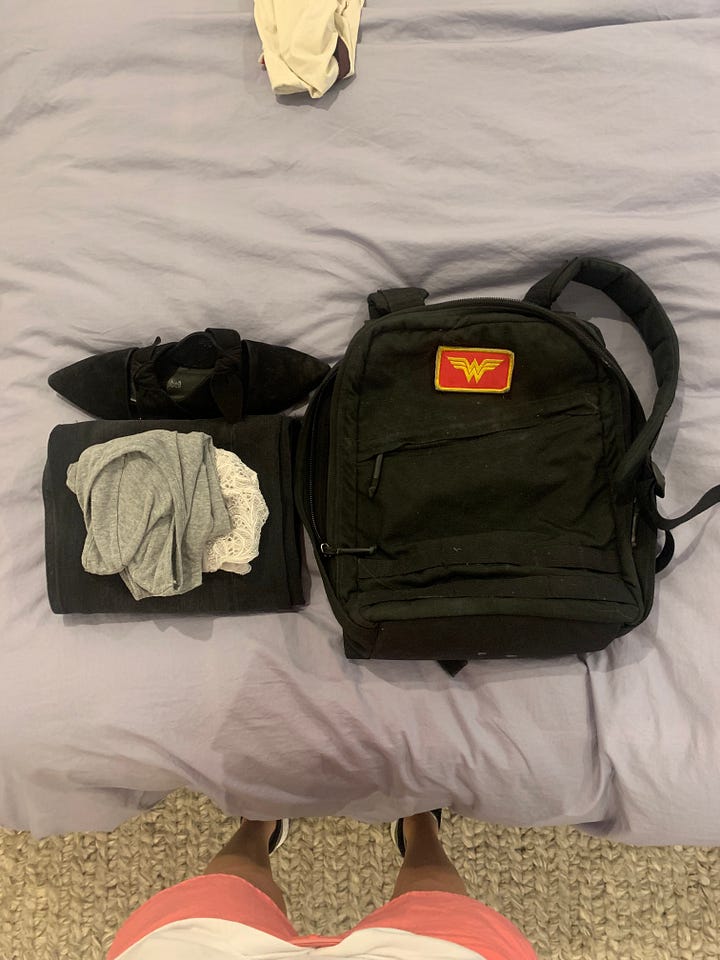
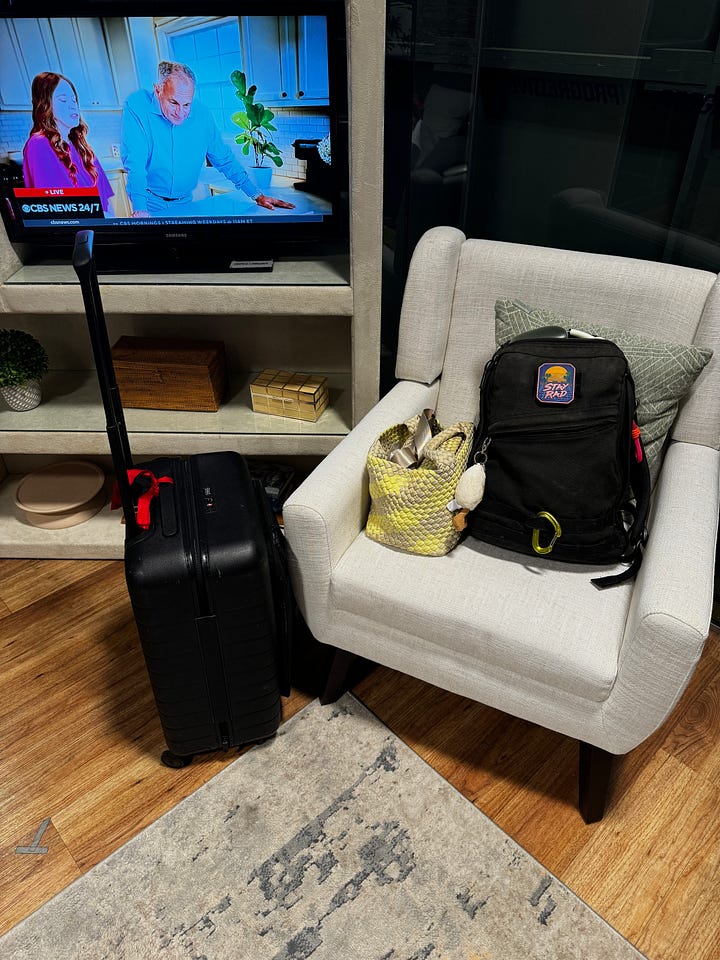
So What’s Next?
In this role, I’ll work closely with Emily, Nichele and the rest of the GORUCK team on story-telling, creative strategy, product development and events. We are all deeply passionate about showing up for women with intention, joy, compassion, and creativity. We each firmly believe that movement should be fun, and that every human deserves to feel amazing in their body. I’m over the moon to bring that ethos to more of you out there.
I appreciate you following along on my adventures. You know I love a like/heart—it helps Best Case Scenario get more visibility on Substack—and it would be delightful to hear from you in the comments about your experience with walking, running and rucking.


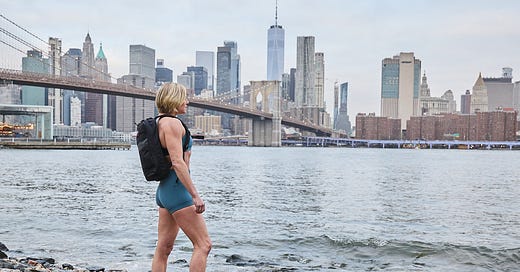


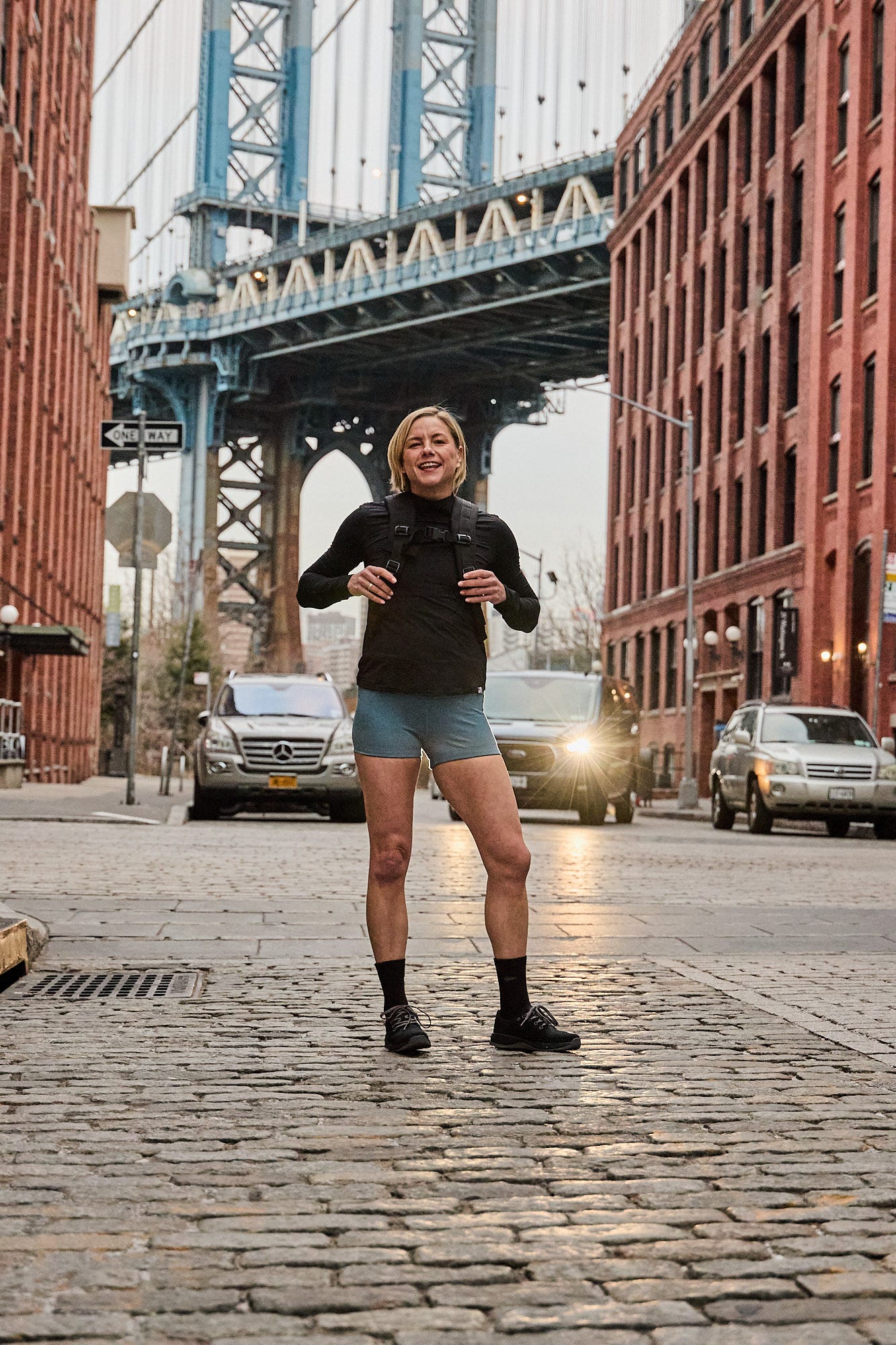
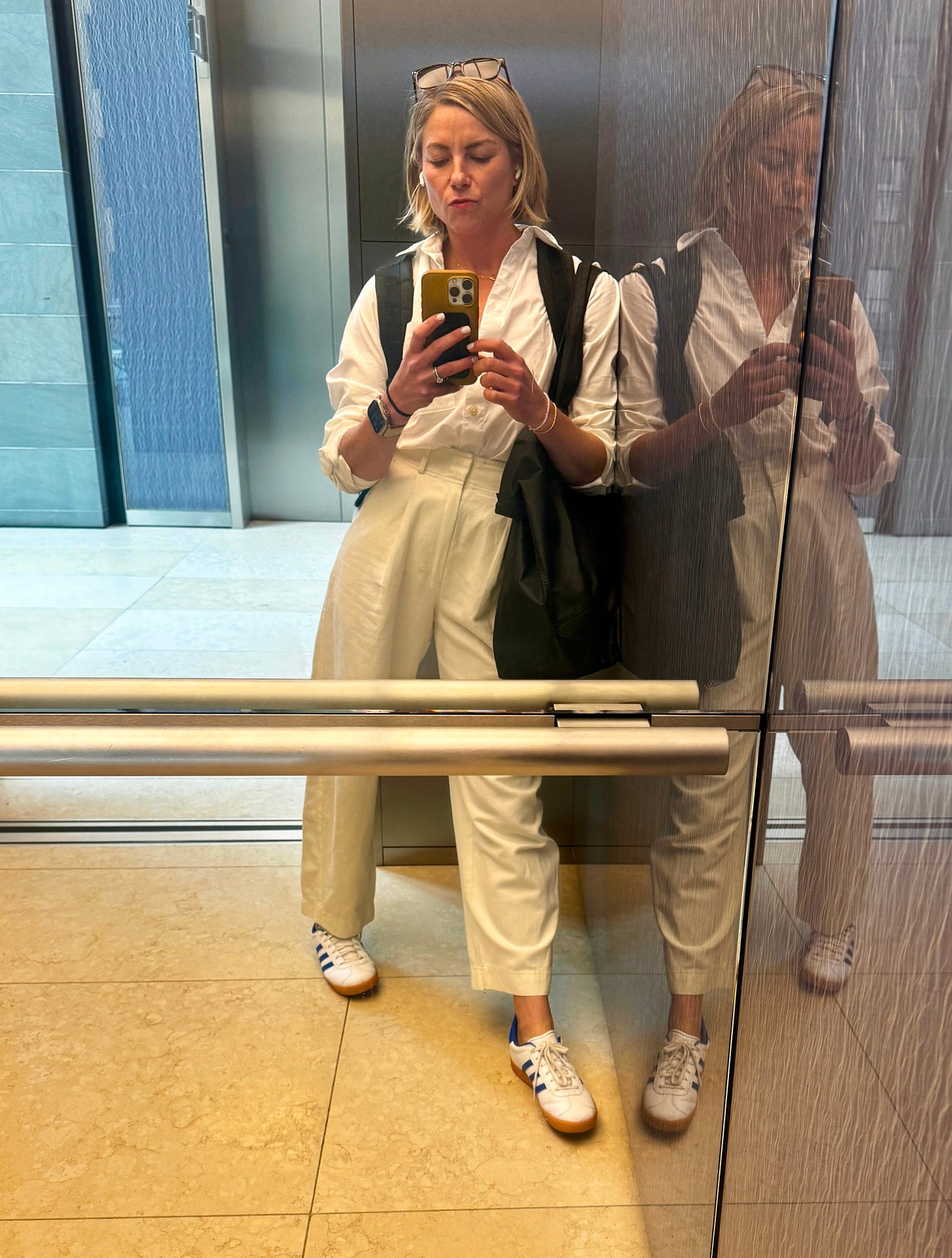

This is great. My days in the office are with a ruck full of books and laptops and a walk across Manhattan. I think it’s fantastic GR hired a creative director. This space can and should explode.
Congrats and lucky for them. We’ve started a nice little rucking crew at RW with the help of some Goruck supplies.💪